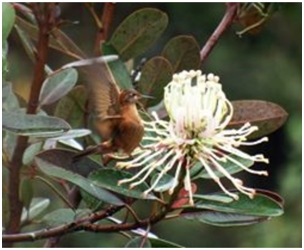Pollination ecology of Oreocallis grandiflora (Proteaceae) at the northern and southern ends of its geographic range
DOI:
https://doi.org/10.26786/1920-7603(2016)4Abstract
Geographic variation in pollination ecology is poorly documented, if at all, in many plant-pollinator systems. Great insights could be gained into the abiotic and biotic factors which impact the evolution of floral properties and their potential to lead to speciation by doing so, as both can vary naturally over the geographic range of a plant species. We characterized the pollination ecology of the Andean tree Oreocallis grandiflora (Family: Proteaceae) at the northern and southern ends of its range in Ecuador and Peru in terms of flower morphology, nectar properties, pollinators and plant reproduction. We found significant divergence in the two populations in terms of style length and flower openness, nectar standing crop and secretion rate, and pollinator community. We did not find a significant difference in the length of the pollen presenter or in nectar sucrose concentration by weight (% Brix). The observed divergence in floral traits between the two study populations may be related to a combination of factors, including genetic drift and isolation by distance, distinctive suites of pollinators, or heterospecific pollen competition, which future studies should further investigate. This study demonstrates that pollination ecology can vary substantially across the geographic range of a species, with implications for delimiting species and subspecific taxa.

Downloads
Published
How to Cite
Issue
Section
License
Copyright (c) 2016 Jenny Hazlehurst, Santiago Cardenas, Boris Tinoco, Jordan Karubian

This work is licensed under a Creative Commons Attribution 4.0 International License.











